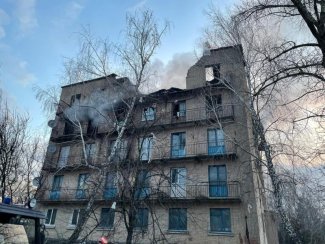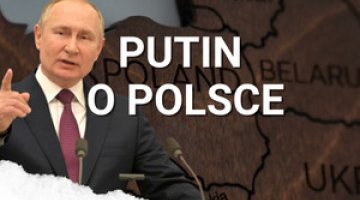The EU will send more ammunition to Ukraine. Day 391 of the war

On the night of 22 March, the Russians launched another attack using Shahed-136/131 kamikaze drones. Unspecified infrastructure facilities in the Zhytomyr and Kyiv oblasts were damaged; at least four people were killed and more than 20 wounded. According to the Ukrainian General Staff, the defenders shot down 16 of the 21 attacking drones. On the evening of 21 March, a pair of Russian fighter jets launched a missile attack on Odesa, where damage was reported (two missiles were shot down). The invaders continued their missile attacks in the Donetsk oblast, including on the town of Slavyansk. On 20–21 March they launched a total of 19 rockets. Russian artillery and aviation continued to shell and bombard Ukrainian positions and facilities along the line of contact and in the border areas of the Kharkiv and Sumy oblasts. Kherson and other towns on the right bank of the Dnieper facing Russian-controlled areas remain the main targets outside the combat areas.
On 20 March, as a result of sabotage by a Ukrainian drone, railroad infrastructure was damaged in the Crimean town of Dzhankoi, the main railroad hub in the north of the peninsula. The damage was confirmed to several facilities (a locomotive depot, a building of the railroad security services, material and fuel storage facilities) and the power grid. According to Ukrainian military intelligence, a depot carrying Kalibr missiles was destroyed. In turn, the Ukrainian General Staff reported that supplies for the Russian Black Sea Fleet (including the above-mentioned missiles) were being routed through Simferopol, while depots carrying supplies for the invading forces in the Kherson and Zaporizhzhia oblasts (mainly to Melitopol) ran through Dzhankoi. After the attack there, the occupation authorities imposed a state of emergency in the town.
On 22 March, the Russian-imposed governor of Sevastopol reported a failed attempt at sabotage by Ukrainian forces using surface drones. The occupying authorities admitted that shortly after the incident some local radio stations began broadcasting false messages about the need to evacuate Crimea. The incident indicates that the Ukrainians are supplementing their military operation with psychological measures in order to increase the sense of threat among residents of the occupied territories.
The Ukrainian General Staff announced that the number of Russian attacks on defender positions had once again risen, to 120 on 20 March, and 114 a day later. The heaviest fighting is still taking place in the area of Bakhmut, but according to the local Ukrainian command, the intensity of the enemy attacks has decreased, and it accounted for less than a quarter of its total activity on 20 March. Ukrainian forces repelled further attempted assaults along the M03 main road to Slavyansk, north and northeast of Chasiv Yar and southwest of Bakhmut. The defenders reported that they had repelled the invaders in the vicinity of Predtechyne village on the eastern outskirts of Kostiantynivka, and north and southwest of Avdiivka. According to some sources, Russian troops attacked the latter town from the southwest for the first time. They failed in their pushes westward between Avdiivka and Horlivka, in the arc west of Donetsk, east of Siversk, southwest of Kreminna, and on the border of Luhansk and Kharkiv oblasts. Other sources say that the attackers did capture areas on the east bank of the Oskil River, in the Dvorichna area of Kharkiv oblast.
On 21 March Colonel Serhiy Baranov, the acting head of the Main Department of Combat Strike Systems of the General Staff of the Armed Forces of Ukraine, who has responsibility for missile troops and artillery, stated that Ukrainian artillery needs nearly 2000 new cannon barrels, and that the barrel-artillery park requires constant replacement. He also stressed that Ukraine cannot fully abandon the use of post-Soviet cannons, but that it does have the opportunity to modernise them, and thus to bring their tactical-technical characteristics closer to their Western counterparts.
On 20 March, it was decided at a meeting of EU foreign and defence ministers to launch a seven-year programme for the joint purchase and production of ammunition (covering a wide range of projectiles, from 5.56-mm calibre for small arms to 155-mm artillery shells), and to set aside funds to transfer one million 155-mm artillery shells to Kyiv. A total of €1.04 billion is to be allocated to buy ammunition of this calibre for Ukraine from the stockpiles of member states, and another €1 billion will go to the production of new 155-mm shells for Ukraine. The funds are to come from the European Defence Agency (EDA) fund, and the ammunition is to be delivered within 12 months. The decision was signed by 17 EU countries and Norway. Bulgaria and Hungary, among others, declared that they would not join the joint project to purchase and produce ammunition. Poland has held off until the participation of a Polish manufacturer of 155-mm ammunition (Dezamet in Nowa Dęba) has been clarified; the EU’s industry commissioner is scheduled to visit the plant on 22 March.
Also on 20 March, the US announced a new military aid package for Ukraine worth $350 million; it will include HIMARS launcher shells, 155-mm and 25-mm artillery ammunition for Bradley infantry fighting vehicles, HARM anti-radiation missiles, 81-mm and 60-mm mortars with ammunition, AT4 anti-tank grenade launchers, and small arms & ammunition.
On the same day, Norway’s defence ministry announced the arrival in Ukraine of eight Leopard 2A4 tanks and four technical protection vehicles. Also on 20 March, Germany’s defence minister announced that the Marder infantry fighting vehicles it has donated were on their way (Germany has pledged to deliver 40 such vehicles). A day later, the British deputy defence minister announced that 120-mm tank shells with depleted uranium cartridges would be sent along with the Challenger-2 tanks which Kyiv is expected to receive by the summer. The Pentagon in turn confirmed a change in its original plans to transfer Abrams tanks to Ukraine: instead of 31 newly-produced M1A2s, which the Ukrainian army would receive in early 2024 at the earliest, the Americans will deliver an equivalent number of refurbished M1A1s by autumn (or within 8–10 months, according to another report). Patriot air defence systems are also scheduled to arrive in Ukraine earlier than originally planned. 65 Ukrainian soldiers are completing their training in the US; they will continue it in Europe on the systems which they will bring back to Ukraine within the next few weeks. The North Macedonian government is considering sending Kyiv 12 Mi-24 attack helicopters, and has confirmed that last year it returned four Su-25 attack aircraft which it had acquired from Ukraine in 2001.
According to Ukrainian military intelligence, Russia has the ability to mobilise up to 20,000 men per month, although this is still not enough to replenish their losses. The morale of those being conscripted is low, and there has been a great deal of activity by so-called ‘barrage troops’ designed to prevent the disorderly withdrawal of soldiers from the battlefield. On 21 March, the Supreme Court of the Russian Federation adopted a legal interpretation specifying how criminal cases for voluntary surrender will be handled. A soldier will not be tried only if it is proven that he took every possible opportunity to avoid captivity. Voluntary surrender is punishable by 3 to 10 years in prison, rising to 20 years if the soldier went over to the side of the enemy (for example, if he joined Russian formations fighting on the side of Ukraine).
On 20 March Oleksiy Danilov, the secretary of Ukraine’s National Security and Defence Council, denied Western media reports that Ukrainian forces had suffered losses of more than 100,000 men since the start of the Russian invasion. He added that the exact number is known only to the military and to the president. As he put it, the ratio of losses is currently 1 to 7–8, and in some cases 1 to 10, in favour of the Ukrainian Armed Forces.
On 22 March, in a lengthy newspaper article, Danilov noted the importance of maintaining an informational advantage in the face of the enemy’s extensive disinformation campaigns. Russia is shaping the anti-Ukrainian message, adapting flexibly to new situations and circumstances, and constantly producing a mass of diverse content tailored to audiences in individual Western countries. They are promoting the following theses: ‘the supply of Western weapons risks the use of nuclear weapons’, ‘the Ukrainian army is ineffective and suffering from low morale’, ‘the effectiveness of the Ukrainian Armed Forces is declining and the military is losing motivation’, ‘Europe cannot continue to exist without Russia’, and ‘the West is suffering from Ukraine fatigue’. Danilov pointed out that in order to divert the attention of Ukraine’s Western partners and cause panic in Europe and the US, the Kremlin is trying to escalate the conflict in other territories sensitive for the West, playing on its nuclear phobia. He added that in some European capitals, the Russian special services are organising a growing number of anti-Ukrainian protests, for which they are using marginal social and political movements.
On 20 March, the Ukrainian parliament adopted a draft amendment to the law on military service. This will allow officers’ ranks to be conferred on soldiers who have combat experience but no higher military education. The adopted solution is only to apply during the period of martial law. The prerequisites for receiving the rank of first officer are having served a minimum of three months in a war zone and having served in an officer’s position for at least three months.
Also on 20 March, the Ukrainian government approved a plan to demine agricultural land in Dnipropetrovsk, Zaporizhzhia, Kyiv, Mykolaiv, Sumy, Kharkiv, Kherson, Chernihiv and Cherkassy oblasts. The first stage of the operation involves clearing an estimated 470,854 hectares (out of more than 5 million hectares of agricultural land) of mines, unexploded ordnance and unexploded ordnance. Land with perennial plantations or intended for sowing will be demined first. It was concluded that it makes most economic sense to concentrate the demining efforts in agricultural land in Mykolaiv and Cherkasy oblasts.
A day later, the government in Kyiv created the state-owned Ukrainian Defence Industry joint stock company. This was done as part of the reorganisation of the state-owned Ukroboronprom corporation. It was agreed that the share capital would be 237 million hryvnias (about $6 million). Prime Minister Denys Shmyhal stressed that Ukraine aims to build one of the world’s most powerful military-industrial complexes, so it will be necessary to introduce an effective management model and create the conditions for attracting investments related to the production of weapons, military equipment and ammunition. It was reported that the company will include 137 enterprises (21 of which are presently located in the occupied territories).
Commentary
- The EU’s decision to launch a seven-year joint artillery procurement and production programme is the first move since the end of the Cold War to boost the defence capabilities of continental European countries. Although Kyiv will be the main beneficiary of the programme over the next several months, it also aims to improve the defence capabilities of EU countries. However, the planned transfer of one million rounds of 155-mm ammunition to Ukraine within the next year will not solve the problems of that army’s shortages. In early March, Ukraine’s defence minister Oleksiy Reznikov asked the EU to deliver 250,000 rounds of artillery ammunition per month, and estimated his army’s total needs for an effective counteroffensive in this regard at 594,000 155-mm shells per month (currently, the artillery is estimated to have 110,000 rounds of this calibre per month at its disposal). Ukraine is also obtaining 155-mm ammunition from other sources, mainly the US, which has increased its production to 90,000 units per month during the past year. Nevertheless, this is still not enough to meet Kyiv’s demands. Ukraine’s partners are aware of this, and are thus pursuing a two-pronged approach: gradually increasing their production capacity, and training Ukrainian soldiers to use ammunition more sparingly.
- The parliament’s adoption of a solution that allows experienced soldiers to be appointed to officer ranks is necessary with regard to maintaining the command structure in combat areas. During the war, having formal higher military education lost its importance due to the disorganisation of special education in peacetime. Showing appreciation for the NCOs, who usually enjoy the trust of rank-and-file soldiers, may contribute to keeping morale high. It is also necessary because of the need to keep replenishing previous losses in the command ranks.





